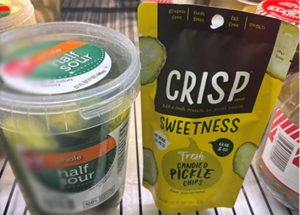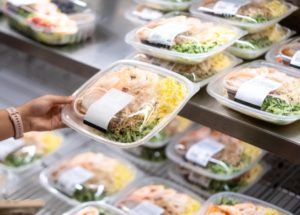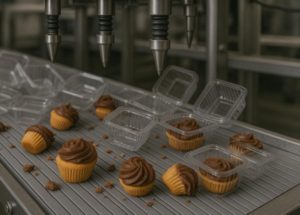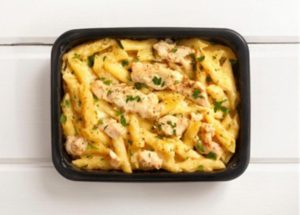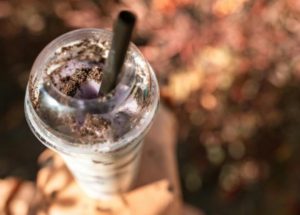Oct 14, 2025
Flexible vs. Rigid Food Packaging: The Ultimate Showdown That’s Reshaping the Industry
At a Glance Flexible package options deliver space efficiency, lower costs, and sustainability benefits, but face challenges with protection, speed, and recycling. Rigid containers provide superior protection, speed, and product visibility, but take more storage space, add shipping costs, and carry higher environmental impacts. Smart brands mix both — flexible for efficiency and labeling, rigid […]
Read More +
Oct 09, 2025
The Food Business Guide to SKU Rationalization: Managing Your Packaging Inventory
At a Glance SKU rationalization helps food businesses cut warehouse chaos, free up cash flow, and streamline operations by eliminating underperforming packaging. The hidden costs add up: Stagnant inventory drains space, ties up money, and creates costly errors in daily operations. A proven framework is effective: Annual audits, ABC analysis, closet analogy assessments, and cross-functional […]
Read More +
Oct 07, 2025
Why Did the Price of PET Suddenly Increase in September 2025?
At a Glance Tariff on PET: A new U.S. tariff on imported PET and rPET resin took effect September 8, 2025, driving up plastic container costs. Industry impact: Some suppliers are notifying customers of higher prices right as the holiday season ramps up. Sustainability setback: Tariffs on rPET may discourage recycling by making recycled content […]
Read More +
Oct 01, 2025
A Rookie’s 7 Takeaways from IBIE 2025
At a Glance 2025 IBIE takeaways focus on viability, not flash: Leaders are tackling labor shortages, sustainability demands, consumer shifts, and thin margins. Sustainability pays off: Progress over perfection, with tools like shelf-life extension and waste heat recovery turning costs into real returns. Packaging and innovation are profit drivers: Smart packaging, AI forecasting, and predictive […]
Read More +
Sep 29, 2025
Why Packaging Deserves a Seat at the Product Launch Table
At a Glance Treating new product packaging as an afterthought leads to costly issues like product damage, poor shelf appeal, and missed sales. Packaging affects the full customer experience — from protection and usability to how the product is perceived on shelf. Involving packaging partners early results in better design, longer shelf life, and stronger […]
Read More +
Sep 24, 2025
What Message is Your Packaging Sending in the First 3 Seconds?
At a Glance Packaging drives consumer decisions in just three seconds, making it the critical first impression that can make or break a product. Poor packaging choices — cracks, weak seals, dull clarity, or mismatched branding — undermine quality and push shoppers toward competitors. Packaging impacts far more than sales: it affects shelf life, waste, […]
Read More +
Sep 22, 2025
Stuck Together: The Hidden Cost of De-Nesting Failures
At a Glance Poor de-nesting design causes chaos: Stuck containers lead to spills, wasted product, and workers cleaning instead of checking quality. De-nest lugs fix the issue: Smart lug patterns (A-B-C) prevent containers from locking but need upkeep. Teamwork matters: Manufacturers design solutions; processors maintain and communicate to keep lines running. The payoff: Smooth automation, […]
Read More +
Sep 17, 2025
Purchasing Directly from a Manufacturer vs. Through Distribution
At a Glance Direct purchasing from a manufacturer and buying through distribution models each have unique strengths — direct buying offers lower per-unit costs for large, consistent orders, while distributors provide flexibility, storage space, smaller order quantities, “just-in-time” delivery, safety stock, and broader product variety. Total cost matters more than unit price; storage, labor, and […]
Read More +
Sep 10, 2025
What Packaging Material Can Go from Freezer to Oven Without Breaking?
At a Glance CPET packaging handles -40°F to 420°F and is perfect for freezer-to-oven meals. Made with special thermoforming tools and processing, it keeps its shape and blocks oxygen, water, and grease. Recycling is a challenge, but new CPET Light and TPET offer clearer, greener options. Use CPET for extreme temps; choose alternatives for moderate […]
Read More +
Sep 08, 2025
Is All Plastic Food-Safe? What You Need to Know
At a Glance Resin identification codes (the triangles made of chasing arrows) show the plastic type, not whether it’s certified for food contact; even common codes like PET (1) or PP (5) can be unsafe if made from non-compliant materials. Food-safe plastic isn’t guaranteed by appearance or resin codes — true safety requires FDA-approved materials, […]
Read More +

